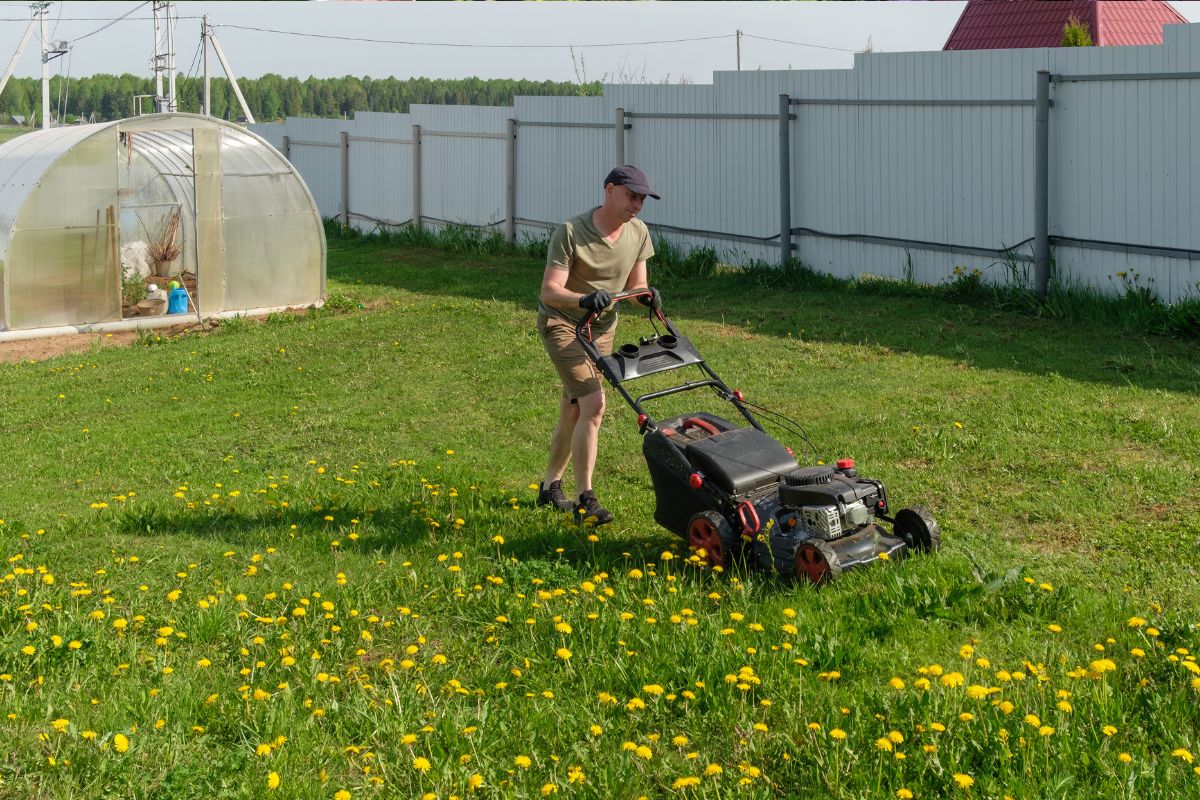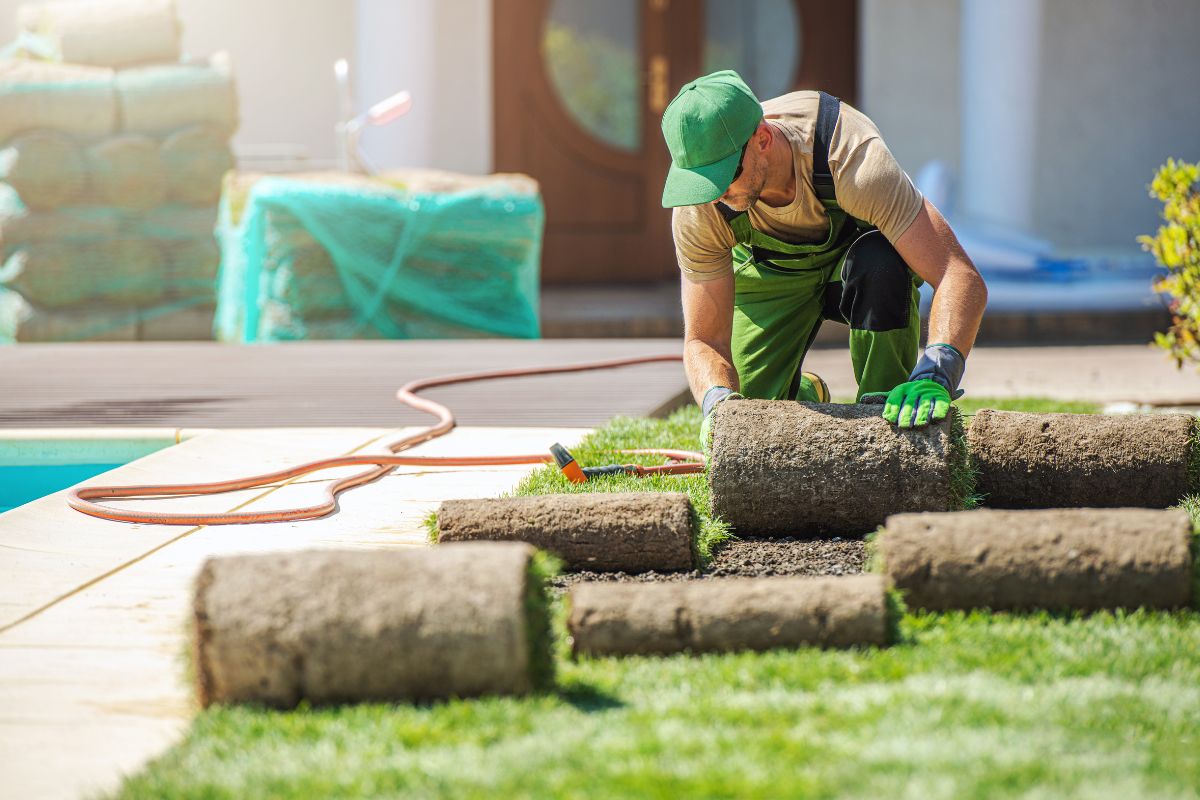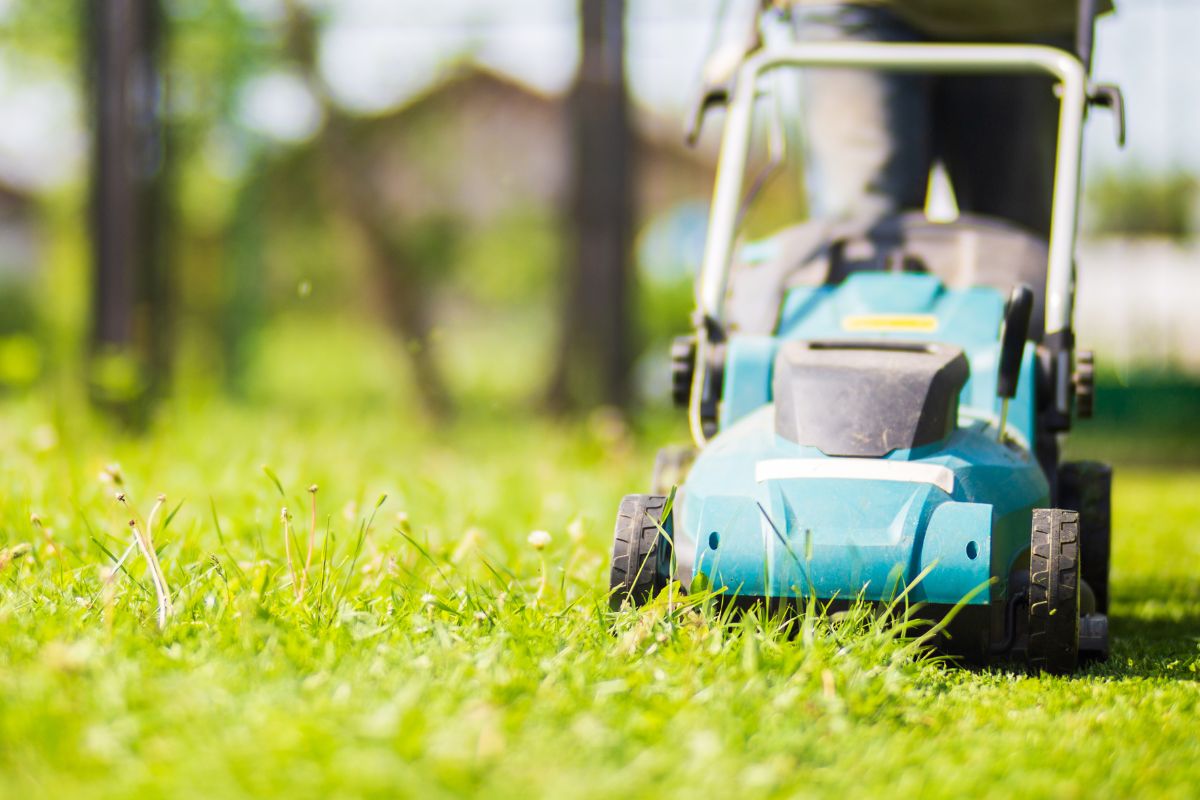Having an exquisite piece of real estate always goes hand in hand with a vibrant green lawn. It enhances aesthetics, increases the attractiveness of homes, and remains a perfect outdoor recreation area. However, keeping the yard looking like that is not always easy, particularly when choosing between having a real lawn and a fake one, or a synthetic lawn, (artificial grass).
Real grass cools the environment, absorbs carbon dioxide, and supports biodiversity, while synthetic grass saves water, resists UV damage, and lasts 15-25 years. However, real grass has higher long-term maintenance costs, and synthetic grass can become significantly hotter under direct sunlight.
The decision of whether to install natural or synthetic grass is continually being argued by homeowners, landscapers and gardeners. Where natural grass presents aesthetics, a green image and ecological worth, artificial grass guarantees a resilient long-term performance with minimal care required. However, which of them is the absolute ruler? In this blog, we will compare the uses of both and assist you in deciding which one might be better for your lawn.
Understanding the difference between turf and grass is crucial here—it’s not just about looks, but about lifestyle, budget, and environmental priorities.
In this blog, we will compare the uses of both and assist you in deciding which one might be better for your lawn.
What Is Real Grass?
Real grass otherwise called natural turf grass is the traditional type of grass, sown from seeds and grows naturally under the effects of sun, water, and nutrients from the soil. Some of the common types are Kentucky bluegrass, Bermuda grass and fescue all of which grow well under different conditions. Real grass is known for needing quite a lot of maintenance, for example, mowing the lawn, applying fertilizer, watering the grass and aeration to maintain its health and colour.
The Pros and Cons of Real Grass
Discover the benefits and drawbacks of real grass, from its natural cooling and eco-friendly properties to the ongoing costs and maintenance challenges it brings. Perfect for understanding if real grass suits your lifestyle and budget!
Pros of Real Grass:
- Aesthetic Appeal: There’s no substitute for having the real thing and that is natural grass. So it can be like a real lawn in terms of texture, colour, and scent. Also, it is sympathetic to the surroundings and can be modified to fit the four seasons, thus making it appear rustic.
- Environmental Benefits: Lawn, as part of the real grass, is involved in the environmental system. It facilitates the uptake of carbon dioxide, produces oxygen and in the process also cools the environment as an air conditioner. Moreover, grass plays a role in checking dams against soil erosion while enhancing the support of insects and small wildlife.
- Improved Air Quality: Real grass again has the function of playing a role of purifying the air it absorbs dust, dirt and other pollutants found in the environment. To achieve cleaner air within your compound and areas of high human and traffic, it enhances it.
- Cooling Effect: In the warm summer season, for instance, the natural grass tends to have a cooling effect on the local environment. Grass generally captures the light and cools the air through evaporation by letting out moisture.
- Natural Water Absorption: The use of real grass also assists in rainwater absorption as opposed to water flooding and water running. Natural pastures have the potential to withstand rainwater in their natural stands which recharges the water table.
Cons of Real Grass
- Maintenance Requirements: Natural grass has to be well maintained to maintain a green and healthy look. Growing it to length, watering, feeding, and aerating are required for its appearance or look. This can be time-consuming and costly.
- Watering Needs: Real grass demands a daily supply of water, primarily if the weather is extremely hot or if it is summer. Irrigation needs can turn expensive and extreme usage of water has negative impacts on water scarcity in some places.
- Pest Problems: Grass lawns are very vulnerable to many pests including grubs, aphids, and beetles among them. Some of the inputs, for example, pesticides used in lawn care could be necessary to eliminate some form of invasion, for instance by rodents, with some impacts on other species in the ecosystem.
- Weed Growth: Some of the plants are common weeds that grow in natural lawns competing with grass for food and water. Mowing the lawn with great frequency would make it free from weeds and this would also translate to its disadvantage since its management would entail the use of herbicides.
- Vulnerability to Weather: The key challenges which are associated with natural grass include unfavourable weather conditions like drought, heavy downpours, freezing conditions, and others that are capable of degrading the surface resulting in no quality turf that would allow mowing throughout the year.
What Is Synthetic Grass?
Artificial turf, or simply synthetic grass, is a form of manufactured material intended to depict grass and is commonly used in artificial grass installation for residential, commercial, and recreational spaces. The usual materials used are synthetic fibres, predominantly polyethylene or polypropylene, put over a base substrate may be gravel or sand, and in-filled with rubber or sand for support. Fake grass is just like natural grass but one cannot use it to water, mow or do anything else that one does to natural grass. It is widely applied to sports fields, playgrounds, and roofs and is more or less recently and widely applied in home lawns.
The Pros and Cons of Synthetic Grass
Explore the advantages and disadvantages of synthetic grass, from its low maintenance and water-saving benefits to its higher upfront cost and heat retention in direct sunlight. Find out if it’s the right choice for your space!
Pros of Synthetic Grass:
- Low Maintenance: Synthetic grass requires low maintenance. It doesn’t have to be mown, watered, or fed which are the common attributes of natural grass. Unlike natural lawn grass which may require you to spend hours to maintain them look beautiful.
- Durability: Artificial turf is very resistant and it can easily endure traffic stress. In such places as a child playing, pet activity, or outdoor parties, the artificial grass does not wear out, and its texture stays as it was when newly laid.
- Water Conservation: It is enticing to note that your synthetic grass doesn’t need watering to maintain its green colour. Potable water is considered a very precious resource in the summer season or any period of the year when there is a very limited availability of foliage or simply when placed in an arid condition, artificial turf has proved to be very useful and environmentally friendly since it is known to conserve a lot of water.
- No Pests or Weeds: Synthetic grass inhibits weed and pest growth thus no pesticides or herbicides are used. This is especially so since it is chemical-free and can nicely work on lawns without adversely affecting the occupants of the houses.
- Consistent Appearance: Synthetic turf remains green all year round without being affected by the changing of time. It will not die brown during winter or wilt during summer, it will have green-looking grass throughout the year.
- Eco-friendly Options: Most synthetic grass in production today is made from recyclable materials and there are productions of environmentally friendly turf systems.
Cons of Synthetic Grass
- Initial Cost: It should also be known that there is a significantly higher initial cost that comes with the installation of synthetic grass in comparison to planting of real grass. This is often a problem for some homeowners who have large yards.
- Heat Retention: Artificial grass can get quite hot when exposed to sunlight and more so during summer. The floor may also be uncomfortable when walking on it barefoot and, in some cases, it could be a safety hazard to pets or children.
- Environmental Impact: Although synthetic grass consumes less water and is low maintenance, problems arise in the manufacturing and dumping of artificial turf. It is produced from plastic products, which are environmentally unfriendly, and it can take many years to decompose in the landfill.
- Potential Toxicity: It is feared that some synthetic turf has incorporated some chemicals such as lead or any other chemical substance. When it comes to high-quality synthetic turf there are no toxic compounds used in production however it is recommended that you consider taking your time and do some research and compare the best synthetic turf brands with the use of toxic materials to ensure that your family and pets are safe.
- Drainage Issues: Now synthetic turf has been designed to incorporate some kind of drainage feature; however, over time it is still going to have some drawbacks like poor draining especially if placed in areas that receive a lot of rain. In time it makes the water accumulate on the surface and in the process, it forms ugly looks and unpleasant smells.
Cost Comparison: Real Grass vs Synthetic Grass
In essence, there’s a large variation depending on how you’ll achieve the goal of having the lawn and this depends on whether you’ll use natural or artificial grass. Let’s break down the costs associated with each option:
Real Grass:
- Initial Installation: Installing real grass can be costly, with prices ranging from $10 to $30 per square meter, depending on the type of grass, seeds or sod chosen, soil preparation, and the installation of irrigation systems.
- Ongoing Maintenance: The annual maintenance cost for real grass typically ranges between $500 to $1,500. This includes expenses for fertilizers, pesticides, herbicides, aeration, mowing equipment, and water usage, especially in hot climates.
Synthetic Grass:
- Initial Installation: The cost of installing synthetic grass is higher upfront, ranging from $50 to $150 per square meter. This includes purchasing the turf, preparing the ground, and installing the correct base layer for long-lasting results.
- Ongoing Maintenance: Maintenance costs for synthetic grass are minimal, averaging $50 to $150 annually. This covers occasional brushing, hosing down, or cleaning to keep the turf looking fresh and clean.
Long-Term Value:
- Real Grass: It is less cost-effective than fake grass since factors like water, fertilizer and other products used to maintain the grass are becoming quite expensive. If the climate is so extreme it can affect the growth of natural grass.
- Synthetic Grass: It is more costly to install synthetic grass initially but will save you a lot of money in the long term. You can stop spending a lot of money on water bills.
Which Option Is Right for You?
In the case of choosing between real grass and synthetic one, one should take into consideration the important factors such as price, ecological issues and time for mowing the grass. Here’s a breakdown of scenarios where each option might be the best fit:
Choose Real Grass If:
- You appreciate the appearance, feel, and smell of an ‘all year round’ Turf.
- You have the time and or/means to carry out the maintenance of the lawn regularly.
- You are surrounded by water and can provide your lawn with all the necessities it needs to survive the climate in your region.
- You are worried about environmental gains such as oxygen production and water absorption.
Choose Synthetic Grass If:
- You have always wanted a lawn that is easy to maintain, and green all year without having to spend too much time on it.
- Water restrictions or drought exist in your living area.
- You want no more expensive water bills and no more money to be spent on chemicals to take care of the lawns.
- You have children or pets that play on the lawn and you need a surface that is moderately hard-wearing.
Conclusion: A Balanced Approach
Real grass or artificial grass includes benefits and detriments with each having what is best for one person being different to what is best for another depending on how they will use the grass. Real grass is suitable for any individual who cherishes natural and environmentally friendly lawns and is ready to cater for frequent maintenance. But if you are aiming at something that requires little or no maintenance but still provides a region with a beautiful green look all year round then synthetic grass is the answer.
In conclusion, the precise validity of this problem does not offer a specific solution to the problem of disagreeing opinions. This means that when going out to purchase grass either the real or artificial one, then go for the one you deem right for you, your pocket and the climate you live in. If managed well and considered properly then you will end up with a magnificent and practical lawn that compliments and enhances the aesthetic value of your home.












